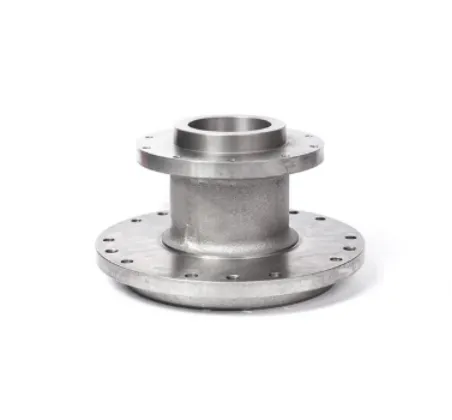Mobile:+86-311-808-126-83
E-mail:info@ydcastings.com
Impeller Technology That Powers Precision in Pump Systems
In the world of fluid transfer and industrial engineering, no component is more central to performance than the girante. As the driving force behind fluid motion in pumps, the girante determines the system’s pressure, flow rate, and energy efficiency. Combined with supporting parts like cap ends, this often-overlooked device plays a fundamental role across sectors—from wastewater management to chemical manufacturing and HVAC systems.
Understanding the Impact of a High-Efficiency Impeller
IL girante is the rotating element of a centrifugal pump that propels fluid through the system by converting rotational energy into kinetic energy. Its design, including the shape and number of vanes, dictates the velocity and direction of the fluid. Whether open, semi-open, or fully enclosed, each girante configuration is engineered for specific applications, such as handling slurries, chemicals, or clean water.
Material selection is critical too. Common choices include stainless steel, bronze, and high-performance polymers, each offering different levels of corrosion and wear resistance. A high-quality girante not only boosts pumping efficiency but also reduces operational noise and extends maintenance intervals—making it a crucial factor in total system performance.
The Role of Cap Ends in Sealing and System Integrity
While the girante manages motion, cap ends are essential for enclosure and sealing within pump systems. These components, typically made from durable metals or pressure-rated composites, serve to close off the ends of pump casings or piping systems. Their job is to maintain pressure, prevent leakage, and protect internal components from environmental contaminants.
Custom-fit cap ends ensure a tight, reliable seal that contributes to system safety and reliability—particularly under high-pressure or high-temperature conditions. In modular or field-assembled systems, removable cap ends simplify inspection and servicing, enhancing both convenience and lifecycle value.
Matching System Demands with the Right Impeller on Pump
Selecting the ideal impeller on pump configuration requires a deep understanding of system dynamics. From flow rate and head pressure to fluid viscosity and particulate content, each parameter influences which impeller on pump will deliver optimal results.
A mismatch can lead to cavitation, excessive wear, or underperformance. That's why manufacturers and engineers rely on detailed pump curves and hydraulic modeling when determining the appropriate impeller on pump. In more advanced settings, variable geometry impellers and smart pumps with feedback sensors are being deployed to auto-adjust for changing loads.
Whether you're upgrading an existing setup or commissioning a new system, attention to the impeller on pump selection is essential to avoid costly inefficiencies.
German Precision in Every Pumpe Impeller
The term pumpe impeller, frequently used in German or European markets, reflects a reputation for durability and mechanical precision. These pumpe impeller units are often cast, machined, and dynamically balanced to achieve maximum efficiency and minimal vibration, especially in heavy-duty environments like energy plants and industrial processing.
In many cases, pumpe impeller products are developed using CFD simulations and performance testing to meet stringent ISO or DIN standards. The result is a component that delivers long-term reliability, minimal maintenance requirements, and optimal fluid control even under harsh conditions.
As global markets continue to demand higher standards of reliability, the pumpe impeller remains a benchmark in engineered performance.
Impeller FAQs
What is the function of an girante in a centrifugal pump?
UN girante is responsible for increasing fluid velocity and pressure by converting mechanical energy from the motor into fluid motion.
Why are cap ends important in pump assemblies?
Cap ends help seal pump or pipe ends, preventing leaks and maintaining internal pressure, especially in high-stress systems.
How do I choose the right impeller on pump?
The ideal impeller on pump depends on fluid properties, system pressure, and desired flow rate; engineering consultation is often necessary for proper selection.
What makes a pumpe impeller different from standard models?
A pumpe impeller often refers to European-grade components known for precise engineering, long service life, and adherence to strict manufacturing standards.
Can a worn-out girante affect pump efficiency?
Yes, a damaged or worn girante can lead to reduced flow, increased energy use, and potential damage to other pump components.

-
Materials Used in Manufacturing Cap End Pipe FittingsNotiziaNov.24,2025
-
Material Properties of CF8M CastingNotiziaNov.24,2025
-
How to Inspect Pump Cap Ends for DamageNotiziaNov.21,2025
-
Backward Curved Impeller – Efficient Airflow Solutions for Industry | YD CastingsNotiziaNov.21,2025
-
Automobile Water Pump - Efficient, Quiet, Durable & ElectricNotiziaNov.21,2025
-
Impeller for Pumps – High-Efficiency, Durable, OEM-ReadyNotiziaNov.21,2025











